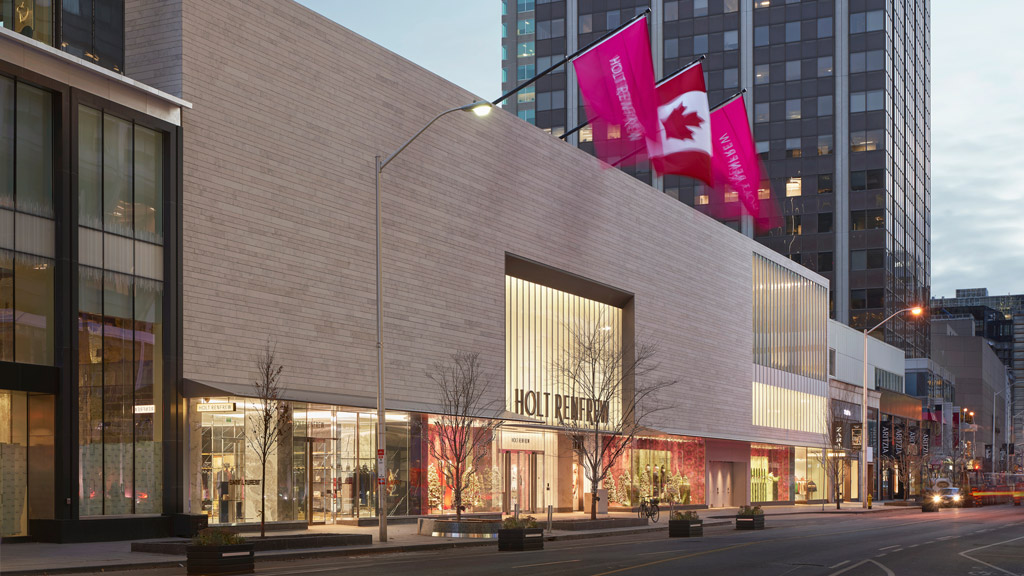Implementing Sustainable Design Strategies in the Retail Environment
May 05, 2023 | By Alexia Beghi
Editor's Note: this article was originally published by Retail TouchPoints
The retail industry is undergoing an unprecedented wave of change as global issues have affected retailer supply chains, the labor market, and consumer behaviors. Sustainability has come to the fore as consumers become more conscious of how their purchases are impacting their local communities and the environment. There is greater demand for transparency and active participation in sustainable practices from retailers across the spectrum, and consumers, especially Gen Z, are holding brands accountable for greenwashing through their spending power.
Purpose-driven consumers — those who choose brands based on how well they align with their values — represent the largest segment of consumers. These shoppers are willing to pay a premium for sustainability, provided that these products have distinct benefits. Additionally, they want to understand the social and environmental impacts their choices are making, need the choice to forego excessive packaging, and demand transparency in supply chain data to confirm retailer claims.
Many brands have made fundamental changes to their business and operating models, shared that progress with sophisticated branding and messaging, and have found huge commercial success during this shift. A report from Kantar found that purposeful companies grow in brand value faster over a 12-year period versus those with a low perceived impact.
Sustainability is good for business, and architects and designers are critical advisors in retailers’ trajectories toward a more sustainable future through the design process of physical locations. Brick-and-mortar stores will continue to be important distribution nodes in the omnichannel experience, so taking the steps toward linking sustainability efforts to the customer experience will ultimately grow brand value and move us toward a more sustainable future.
10 Considerations for Retailers
Retailers have an opportunity to implement sustainable design strategies from the get-go when it comes to brick-and-mortar store design, construction, and programming.
- Prioritize previously developed sites with pedestrian access and proximity to public transit to support your customers selecting lower-carbon transportation options.
- Preserve and celebrate existing materials to reactivate the intrinsic value of a site’s previous life, creating a unique experience while also reducing the embodied carbon of the store. This could be exterior materials, such as existing storefronts or historic architectural elements, or interior flooring and structural systems.
- Consider longer lease terms to limit material waste and lifecycle embodied carbon and select construction materials that will be timeless over the course of the entire lease to avoid unnecessary demolition and turnover. According to the U.S. Environmental Protection Agency, more than 90 percent of total construction debris is produced by the demolition of existing buildings.
- Fixture flexibility, which can take the form of utilizing an existing framework chassis and swapping out paneling and materials, can help avoid a total redesign and reduce materials and labor costs for disassembly. Flexible fixture layouts allow retailers to change and adapt the store over time for activations, events, seasonal displays, and new store concepts. Avoid direct adhesives and fasteners, and work on a modular grid to maximize reconfigurability.
- Be conscious of energy usage by leveraging renewable energy or integrating mechanical systems that control ventilation, thermal comfort, energy metering, and reporting. Lighting is a significant energy user for most retailers. Incorporating an advanced system of lighting controls and sensors can help reduce energy usage when spaces are not occupied or already have access to ample daylight. Displays and layout can even be thoughtfully designed to reduce the need for artificial light.
- Source local, non-toxic, bio-based, and/or recyclable construction materials. These practices can be incorporated into sustainability design standards that retailers can roll out across their fleets. This can include requirements for emissions testing, recycled content, sustainable sourcing for any biobased materials, end-of-life takeback programs, and avoidance of materials with particular toxicity concerns.
- Specify manufacturers with third-party verified Social Responsibility Reports, which measure environmental, ethical, philanthropic, and economic impacts of those companies. Select furniture with embodied carbon or life cycle assessment reports to gauge environmental impact of a construction product across its construction process, use, end of life, and the circular economy.
- Leveraging AR and VR technology can allow customers to virtually test or try on products before purchasing to reduce their carbon footprint. Incorporating digital showrooms can support in-store inventory management and a more seamless omnichannel experience for customers as well.
- With an increased need and desire for recycling, upcycling, and reselling, retailers can explore in-store services that encourage consumers to give products a second life and help close the loop on unnecessary waste. To lead by example, old or retired products can be used as a “building” material or for visual merchandising displays. Retailers should also provide areas for customers to the collection/storage of trash, recyclables, and compost.
- In-store brand experiences can strengthen how retailers communicate sustainability efforts in compelling and transparent ways. From environmental graphics to immersive installations that can educate shoppers on how a product’s materials are sourced, physical brand experiences can also transform and revitalize existing spaces. Tracking and celebrating real data about the location and products makes the difference between greenwashing and real progress.
Retailers and their partners across the industry need to work in tandem with their customers and suppliers to redevelop and redefine industry standards. They must consider fundamental changes to business and service operations and develop new products with the environment at the forefront to respond to shoppers’ demands and the health of our planet. Commitment to deliberate, collaborative, and focused efforts will go a long way and become the critical path toward a more sustainable future.
For media inquiries, email .

